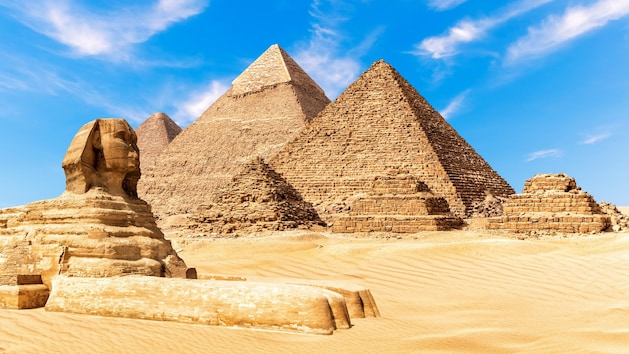New discoveries beneath the pyramids of Giza: Scientists have stumbled upon a mysterious L-shaped structure.
An international team of researchers has discovered a mysterious L-shaped structure beneath the Royal Cemetery in Giza, Egypt. As the Sun reports, the discovery was made while exploring the underground space around the world-famous pyramids.
The enigmatic structure was discovered using new imaging technology by a team of Japanese and Egyptian researchers. They used something called electrical resistance tomography (ERT) to get a three-dimensional image of the area being examined. They encountered an L-shaped “anomaly” at least 33 feet (about 10 meters) long.
In a study published in early May in the journal Archaeological Prospection, the research team writes that the structure “appears to be filled with sand, suggesting that it was filled in after its creation.”
One is certain that the continuity of the shallow and deep structure is important. Although the material that caused the anomaly has not been identified, it could be a large underground archaeological structure.
Motoyuki Sato of the Center for Northeast Asian Studies at Tohoku University told Live Science that the shape appears too distinct to be a natural phenomenon. Further investigations are already underway.
The Giza pyramid complex is the largest in the world and includes the Great Pyramid, the Pyramid of Khafre and the Pyramid of Menkaure. The archaeological site is home to numerous artifacts and tombs that testify to life in ancient Egypt.
Since she was 19, Anouk has been unable to eat without pain without vomiting. Doctors diagnosed Dunbar syndrome. The 25-year-old explains how much it limits her – but she doesn’t give up hope.
A group of young people is said to have attacked two men in Magdeburg in Saxony-Anhalt, one of whom died. The victim died from life-threatening injuries, police said on Wednesday.
